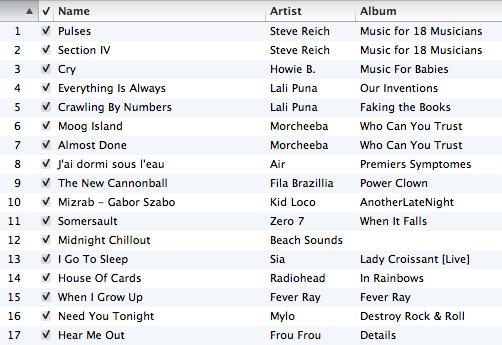4. November 2010
The Sound should accompany the user during the hole process when he goes to sleep. Therefore it is a good way to have a closer look on what happen with the body during this time. Breathing and Heartbeat are reference points which can be guided from the sound to slow down.Synchronization from Sound and User
The sound takes the user from his normal state, when he has a breathing frequency of about 12 breathes per minute. From this point the beat can continuously slow down until it reaches the tempo of a sleeping person. The breathing cycle is the most important reference for the sound. The use of the heartbeat it is more difficult because it can vary a lot more from person to person than the breathing cycle. The difference of the awake and asleep heartbeat is also bigger than the difference when breathing.
I tried heartbeats with the two bars, 5/4 which is closer to the actual values and 4/4 which is slightly too slow.
The use of the heartbeat it is more difficult because it can vary a lot more from person to person than the breathing cycle. The difference of the awake and asleep heartbeat is also bigger than the difference when breathing.
I tried heartbeats with the two bars, 5/4 which is closer to the actual values and 4/4 which is slightly too slow.
The BPM's are while asleep
5/4 bar: BPM 42.857
4 /4 bar: BPM 34.29
During tests with the two bars I discovered fast that the 5/4 is not working because it sounds choppy and most people where accustomed to the 4/4. Especially when the rhythm is very slow.
On the basis of this facts I defined the guidelines in the following way:

